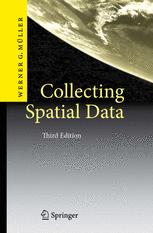

Most ebook files are in PDF format, so you can easily read them using various software such as Foxit Reader or directly on the Google Chrome browser.
Some ebook files are released by publishers in other formats such as .awz, .mobi, .epub, .fb2, etc. You may need to install specific software to read these formats on mobile/PC, such as Calibre.
Please read the tutorial at this link: https://ebookbell.com/faq
We offer FREE conversion to the popular formats you request; however, this may take some time. Therefore, right after payment, please email us, and we will try to provide the service as quickly as possible.
For some exceptional file formats or broken links (if any), please refrain from opening any disputes. Instead, email us first, and we will try to assist within a maximum of 6 hours.
EbookBell Team

4.0
6 reviewsThe book is concerned with the statistical theory for locating spatial sensors. It bridges the gap between spatial statistics and optimum design theory. After introductions to those two fields the topics of exploratory designs and designs for spatial trend and variogram estimation are treated. Special attention is devoted to describing new methodologies to cope with the problem of correlated observations. A great number of relevant references are collected and put into a common perspective. The theoretical investigations are accompanied by a practical example, the redesign of an Upper-Austrian air pollution monitoring network. A reader should be able to find respective theory and recommendations on how to efficiently plan a specific purpose spatial monitoring network. The third edition takes into account the rapid development in the area of spatial statistics by including new relevant research and references. The revised edition contains additional material on design for detecting spatial dependence and for estimating parametrized covariance functions.